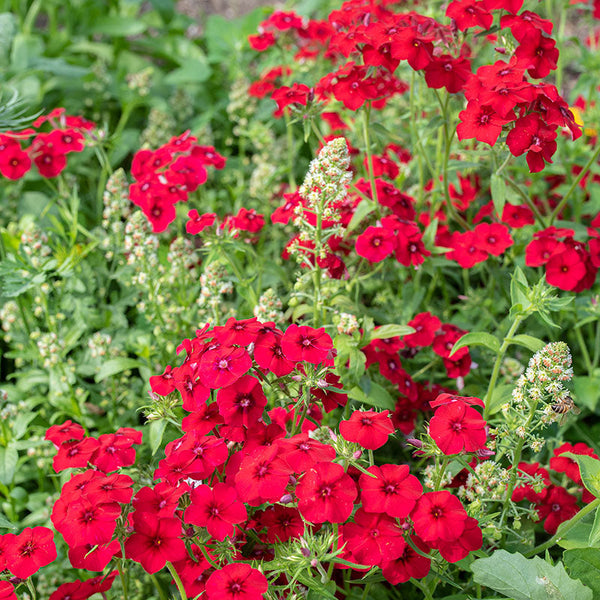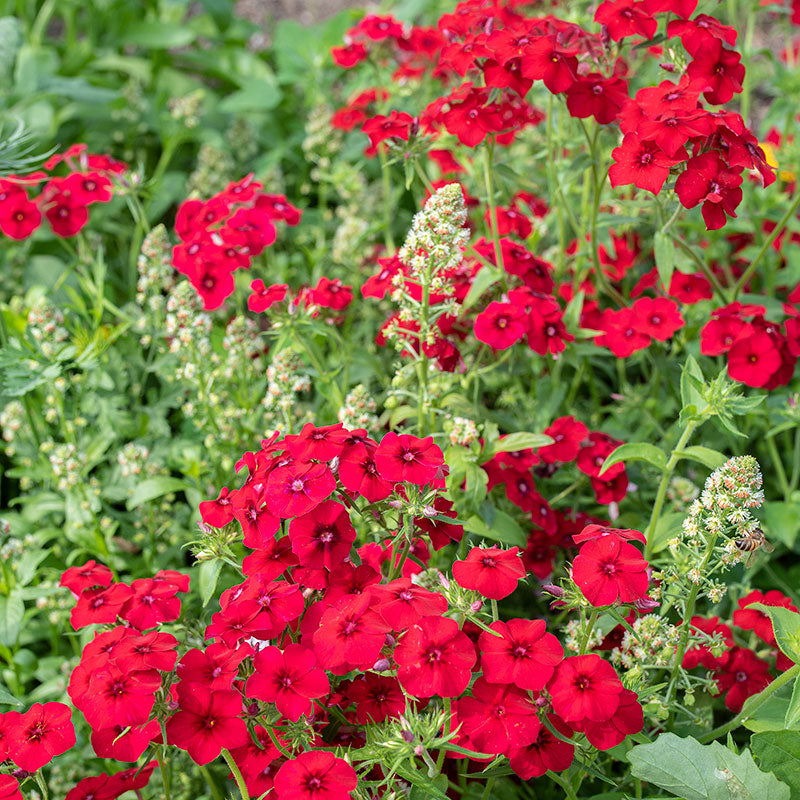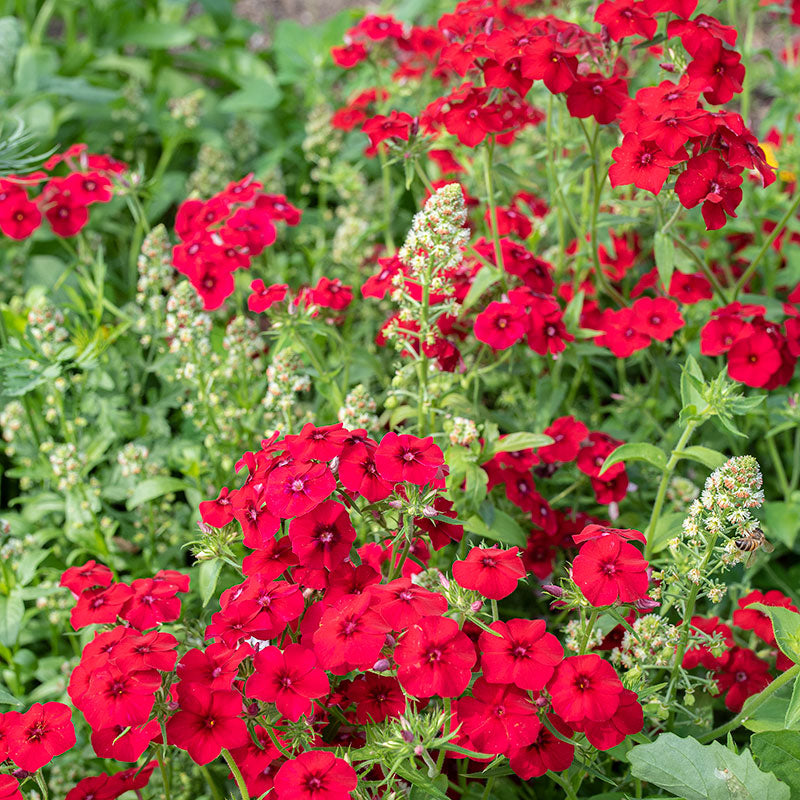SOWING INSTRUCTIONS
Seed To Bloom:
10-12 weeks
Starting Indoors:
Sow indoors 6-8 weeks before last frost. Cover with vermiculite to maintain humidity during germination. Keep at 55-65°F.
Starting Outdoors:
Direct sow in early spring and a second sowing six weeks later, if desired. Fall sow in mild winter areas (zones 8-10).
PLACEMENT & CULTIVATION
One of my favorite annuals, heirloom Drummond's phlox varieties come in a rainbow of colors, from pure white through pastels of yellow and buff to saturated hues of salmon, rose, crimson, and purple, many with contrasting eyes. An 1897 catalog even lists one as "Black Brown", describing it as the darkest available, and unfortunately lost since. An old-fashioned cut flower that lasts well in the vase, it is lovely grown in drifts along the garden's edge and in containers. Annual phlox is covered in bloom all summer and fall in moderate heat and humidity. Deadhead for continual color and provide fertile soil, excellent drainage, and ample air circulation to avoid any fungal problems.
Watering Details:
About 1" per week, watering in the morning only.
Fertilizer:
Incorporate several inches of compost prior to planting, and fertilize with an organic time-release formulation.
Diseases & Pests:
Prevent powdery mildew by spacing plants properly, in a location with good air circulation. Mildew can be prevented with applications of organic fungicide. Avoid crown rot by assuring there is good soil drainage.
When to Cut for Bouquets:
Cut when 1/2 of florets are open. Generally has shorter stems.
































